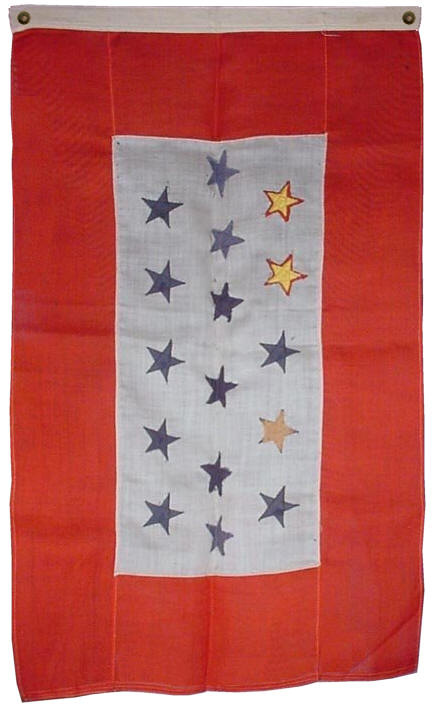 |
One
question often asked by new collectors
is the meaning behind a flag-like
banner that features a red border,
white center, and blue stars.
These banners became prevalent
during World War I and World War II,
and have also been hung during the
Korean War, Vietnam War, The Gulf
War and the current wars in Iraq and
Afghanistan. They are an
official US Military Appurtenance.
Department of Defense Directive
1348.33, Manual of Military Awards
and Decorations, specifies
the regulations for the use and
display of these Service Flags. They can be found in all sizes, from
very small featuring only a single
star, to large banners more than 10
feet in size, and featuring tens or
even hundreds of stars. The
banners were produced by families,
local communities and
businesses to represent sons
who were fighting overseas.
Each blue star represented one
soldier, sailor or airman in the
service. Although originally
representing sons in earlier wars,
today they represent both sons or
daughters who are deployed for war.
One of the most
poignant traits of these flags is
the presence of red or gold stars in
place of (or on top of) the blue.
The red represented a wounded
service member
and the gold represented a service
member who
was killed in action. The
presence of these banners served as
a constant reminder of why families,
communities and businesses needed to
remain dedicated to efforts to win
the war and bring their sons and
daughters back home. The gold
stars reminded them of those who made
the ultimate sacrifice and would
never return home.
|
|
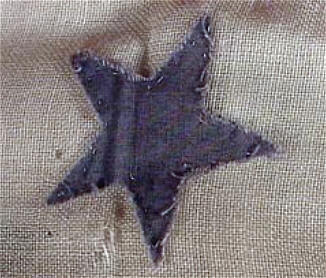 |
Son In Service Flag, World War
II.
This
particular Son In Service Flag is
one of the most touching of all I
have witnessed. The flag is small,
and must have been made by a local
business or community organization.
The original flag was manufactured
with ten blue stars, sewn with a
zig-zag machine stitch--five on each
side.
To the original ten, six
stars were added down the
center. The additional
six stars are roughly cut
and crudely attached with
homemade charm. Some
of the added stars are hand
sewn, others are machine
sewn, symbolically
portraying the progression
of the war as more sons
entered the service. |
|
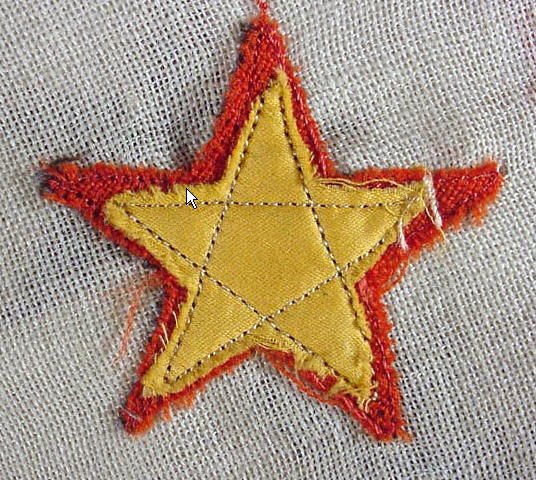 |
On top of two of the blue
stars, cut red stars were
stitched, representing two
sons who were wounded in
combat. Then, upon
hearing that the soldiers
died of their mortal wounds,
a gold star was sewn upon
the red. |
|
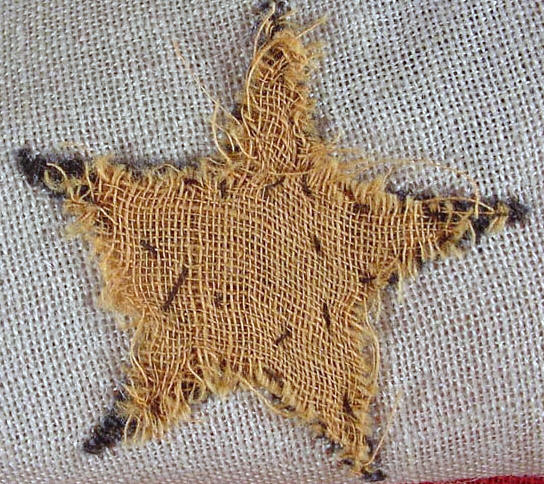 |
Finally, on yet another blue
star, another gold star,
roughly cut and primitively
hand stitched, represents
yet another son who died at war. |
|
 |
Next:
Executive Flags |
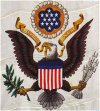 |
|

